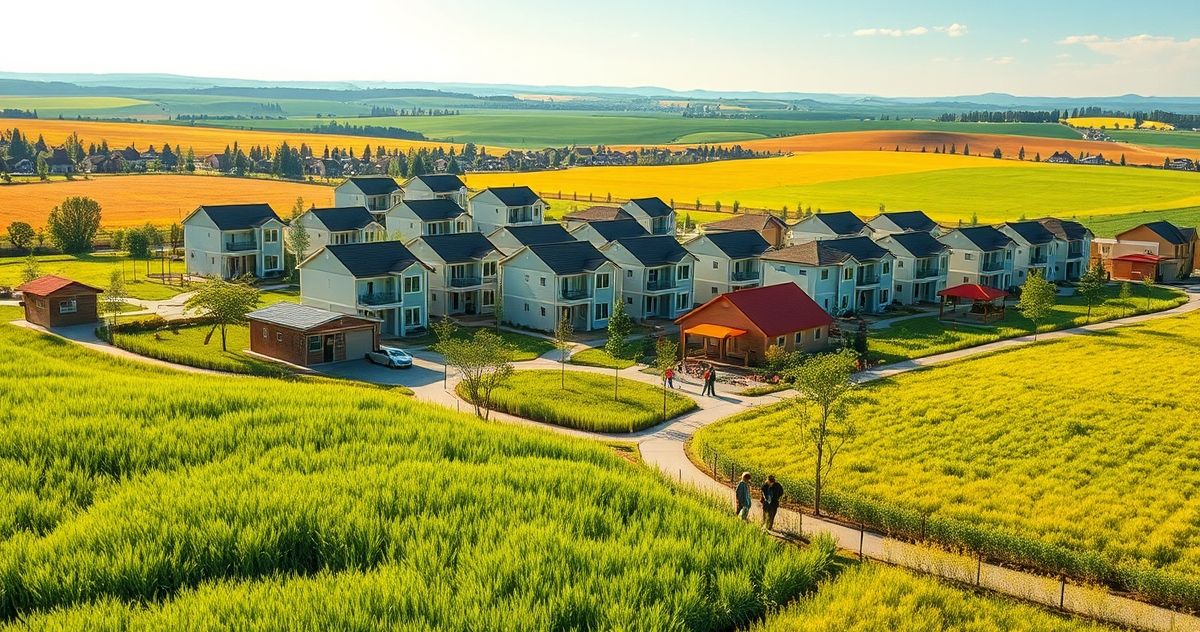Understanding the Farm Worker Housing Credit
The Farm Worker Housing Credit was established to address the pressing issue of inadequate housing for farm workers across the United States. This tax credit incentivizes builders and developers to invest in creating suitable living environments for farm workers, who are integral to the agricultural ecosystem. By offering tax credits, the government aims to alleviate the financial burdens associated with constructing, rehabilitating, or renovating housing dedicated to farm workers.
What is the Farm Worker Housing Credit?
The primary purpose of the Farm Worker Housing Credit is to stimulate the development and availability of decent, safe, and affordable housing for farm workers and their families. It is a targeted tax incentive that seeks to bridge the gap between the urgent need for farm worker housing and the financial resources necessary to develop such housing. The credit benefits those who invest in building or renovating housing specifically for farm workers, thus ensuring that these vital members of the agricultural community have access to adequate living conditions.
Key Features and Components
The cornerstone of the Farm Worker Housing Credit is providing a federal tax credit to developers who construct or significantly rehabilitate housing for farm workers. Key features include:
- Eligibility: The credit is available to entities undertaking construction projects specifically designated for farm worker housing. This includes private developers, nonprofit organizations, and even rural housing authorities.
- Credit Calculation: The credit amount is calculated as a percentage of the costs incurred in the construction or renovation project. Factors such as the location of the housing, the affordability, and the extent of compliance with housing quality standards can influence the credit value.
- Application Process: Interested parties must apply for the credit via established government programs or agencies responsible for managing housing credits. This involves submitting detailed proposals outlining the housing project, estimated costs, timelines, and intended compliance with quality standards.
- Rental and Occupancy Standards: To ensure that the housing provided is genuinely beneficial to farm workers, there are strict requirements regarding occupancy. The units must cater primarily to farm worker families, ensuring affordability and quality living conditions.
Relevant Filing and Compliance Requirements
To claim the Farm Worker Housing Credit, compliance with federal and potentially state regulations is critical. These requirements generally include:
- Project Approval: Developers must receive approval for their housing projects from relevant housing authorities. This might involve demonstrating the project’s purpose, its benefits to the farm worker community, and how it meets existing housing needs.
- Adherence to Standards: The constructed or renovated housing must meet specific safety, health, and habitability standards as established by federal guidelines. Continuous inspections may be necessary to maintain compliance.
- Documentation: To ensure transparency and accountability, developers are often required to maintain detailed records of the construction costs, rental agreements, and ongoing compliance with established standards.
- Periodic Reporting: Many jurisdictions require developers to submit periodic reports detailing the occupancy rates, compliance checks, and any issues arising within the housing projects.
Penalties and Consequences for Non-Compliance
Failure to comply with the Farm Worker Housing Credit requirements can result in significant financial penalties or the retraction of previously awarded credits. Common consequences include:
- Financial Penalties: Developers who fail to maintain compliance or provide falsified information may face monetary fines, often proportional to the credit amounts received.
- Credit Forfeiture: Non-compliance can lead to forfeiture of the tax credits, obligating the developer to repay any benefits received.
- Reputational Damage: Entities found to be non-compliant may suffer damage to their reputations, affecting their ability to secure future projects or permits.
Importance in Tax and Financial Compliance
The Farm Worker Housing Credit plays an essential role in resolving housing shortages for the farm worker population, offering significant tax relief to entities willing to invest in these critical community resources. For developers and investors, this credit not only serves as a financial incentive but also as a means to contribute meaningfully to social improvement by ensuring safe and affordable housing for a workforce that supports the nation’s agriculture and food supply chains.
For entities involved in real estate and construction, understanding and utilizing the Farm Worker Housing Credit can lead to lucrative ventures that align with socio-economic goals of supporting integral agricultural populations. It encourages socially responsible development and promotes economic equity and sustainability within rural and agricultural economies.
Ultimately, the Farm Worker Housing Credit represents a bridge between federal tax relief and community welfare, offering a practical solution to two intertwined challenges: affordable housing shortages and the economic sustainability of real estate development in rural and agricultural communities.

